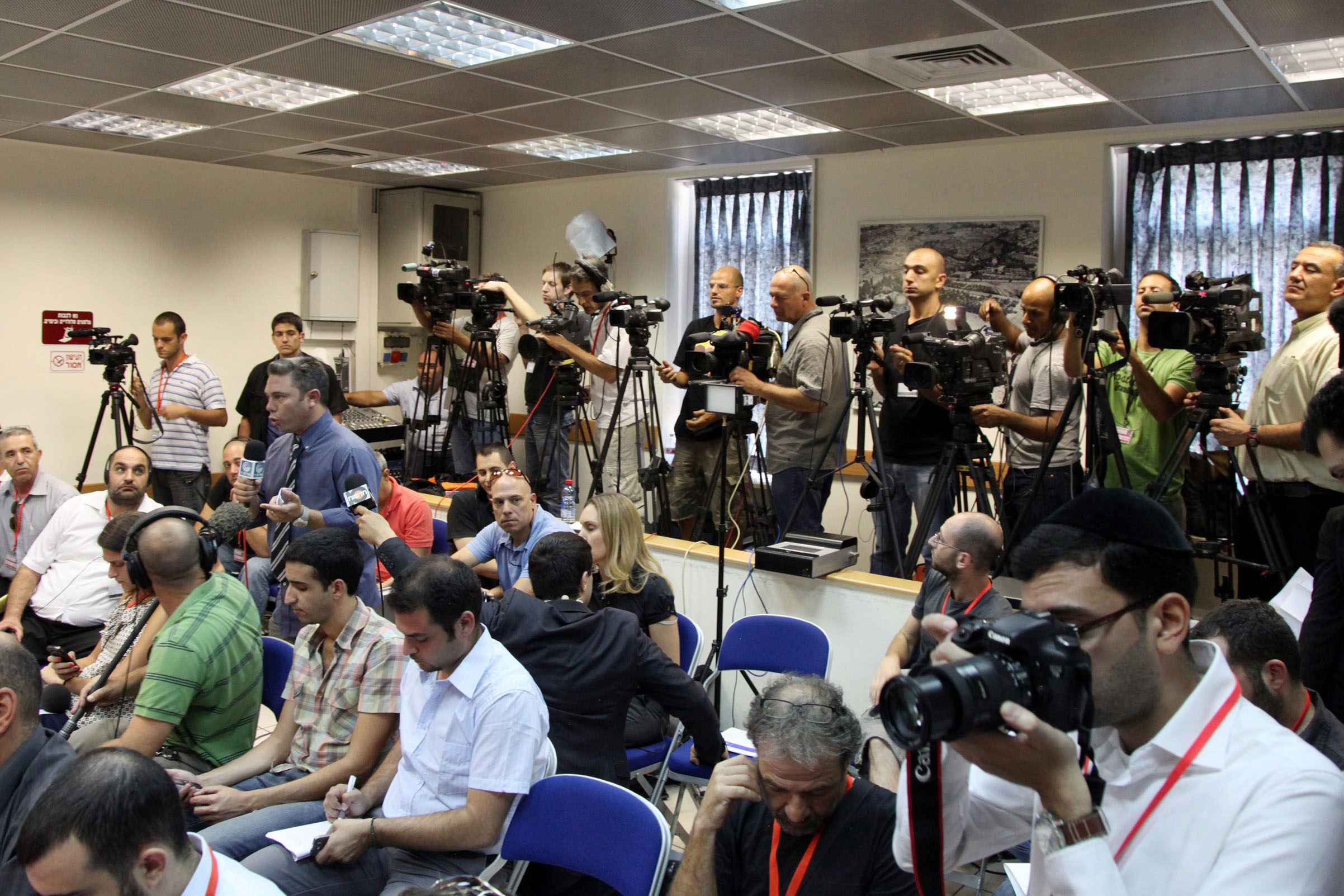Tomorrow, President Donald Trump, marked by controversy and unpredictability, arrives in Jerusalem, Israel’s hotly contested capital. That alone is a potentially combustible combination.
Add to the mix the fact that Jerusalem is subject to more intensive media coverage than any other disputed city. In addition to the 800 foreign journalists stationed in Israel, hundreds more will descend on the capital next week to cover the visit of a president who won an election in which “fake news” loomed large.

To top it off, this week Israel celebrates 50 years since the unification of Jerusalem following the stunning victory in the Six Day War, an event that Palestinians mourn as “The Naksa,” or setback. Precipitated by the Egyptian closure of the Straits of Tiran to Israeli shipping – an act of war – plus the ejection of United Nations troops, the amassing of Arab troops on its border, and bellicose calls for Israel’s destruction, the war unexpectedly ended with eastern Jerusalem and the West Bank (previously occupied by Jordan) and the Syrian Golan Heights, along with Sinai and the Gaza Strip (Egyptian territory) in Israeli hands.
Palestinians seek Jerusalem, Israel’s seat of government, as their capital. Jerusalem, with the Temple Mount – Judaism’s most sacred site and Islam’s third holiest – sits at the very core of the obsessively covered Israeli-Palestinian conflict. In short, the perfect storm of conditions conducive to distorted media coverage of Jerusalem is brewing.
Indeed, with its long history of wars, invaders, and holy sites belonging to the three monotheistic religions, Jerusalem is no stranger to “fake news.” For instance, a journalism student at Arizona State University infamously reported in her campus paper that she witnessed Orthodox Jews stone to death a paraplegic Jew who operated his electric wheelchair at the Western Wall on the Sabbath. “I could smell the man’s blood and felt faint,” detailed Mary Leigh Summerton. “He fell from his wheelchair, to the ground.” Her defamatory article was 100 hundred percent fabrication.
That was in 1994 — decades before anyone had heard of “fake news.”
But it’s not only the amateur journalists who have been caught flat-out fabricating. Fast-forward to 2005, when Carolyn Wheeler reported in Toronto’s Globe and Mail: “Palestinian leaders left the meeting in Mr. [Ariel] Sharon’s flag-draped residence in the Muslim Quarter of Jerusalem’s Old City grim-faced. . . .” Only, the meeting took place in Sharon’s official residence in the Jewish neighborhood of Rehavia in western Jerusalem, not in the Old City’s Muslim Quarter. Wheeler wasn’t there, but reported as if she was, a gross journalistic wrongdoing.
In 2010, The Economist, following Al Jazeera’s lead, charged Jerusalem with racist traffic lights “which flick green only briefly for cars from Palestinian districts while staying green for cars from Jewish settlements for minutes.” This particularly inventive bogus charge was completely baseless.
“Fake news” stories also emerge when journalists report false Palestinian claims as fact. In 2000, The Wall Street Journal was compelled to correct the false claim that an Israeli attempted to burn down the Al Aqsa mosque in 1969. In fact, the arsonist was an Australian Christian.
Last year The New York Times falsely reported that Palestinians living as protected tenants in eastern Jerusalem faced evictions for absurdly petty reasons, such as changing an old rusting door.
The ensuing lengthy editor’s note detailed the court findings that the families had respectively not paid rent, had only partially paid, or had not lived in the residence for decades.
A 2015 Times editor’s note walked-back an article which falsely reported that it is unknown whether the first and second Jewish temples had actually stood on the Temple Mount, parroting a common Palestinian effort to delegitimize Israel’s claim to the holy site. “The question is where precisely on the 37-acre Temple Mount site the temples had once stood, not whether the temples had ever existed there,” the note clarified.

Unfortunately, media outlets don’t always learn from past mistakes. The Washington Post, for instance, on multiple occasions falsely reported – and corrected – the claim that the Western Wall is Judaism’s holiest site; the Temple Mount, the location of the holy of holies, enjoys that status.
The New York Times has also repeatedly amended lopsided articles that referred to the Temple Mount (or Noble Sanctuary) as Islam’s third-holiest site while ignoring the fact that it is Judaism’s holiest site.
Yet, a Times print article last week again included that very flaw, and also added that since 1967 the Western Wall area “has become” a sacred site for Jews, as if hadn’t been holy for centuries.
It’s impossible to predict what will emerge from President Trump’s upcoming Jerusalem visit. One thing, though, is for sure: misreporting about Jerusalem is as commonplace as the prayers in the Western Wall’s ancient stones.
Contributed by Tamar Sternthal, Director of the Israel Office of CAMERA
Originally published at Times of Israel Blogs and the Jerusalem Post.
